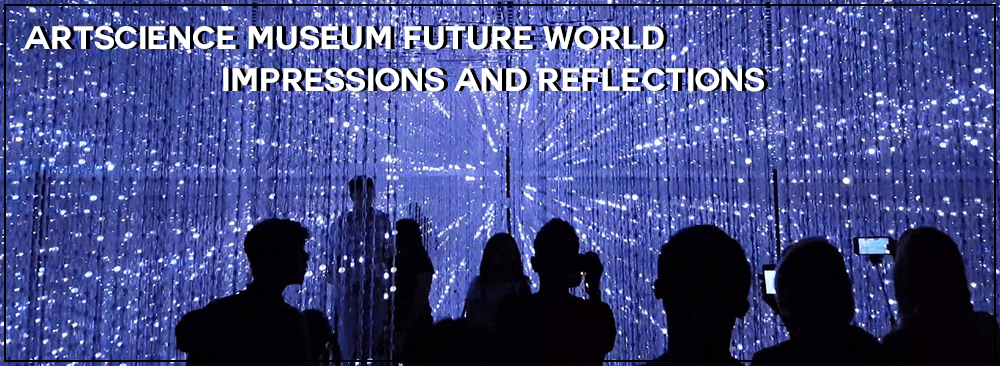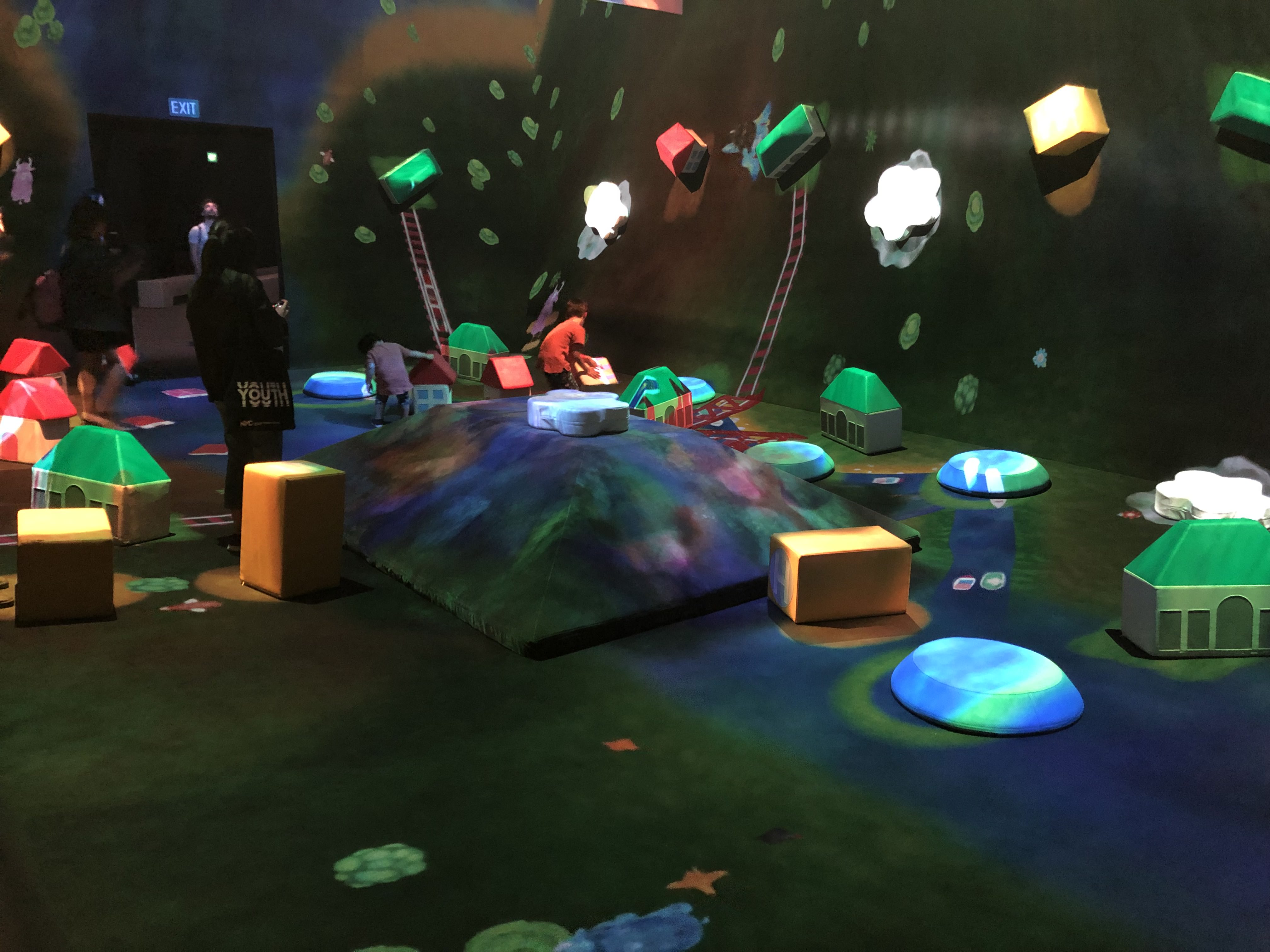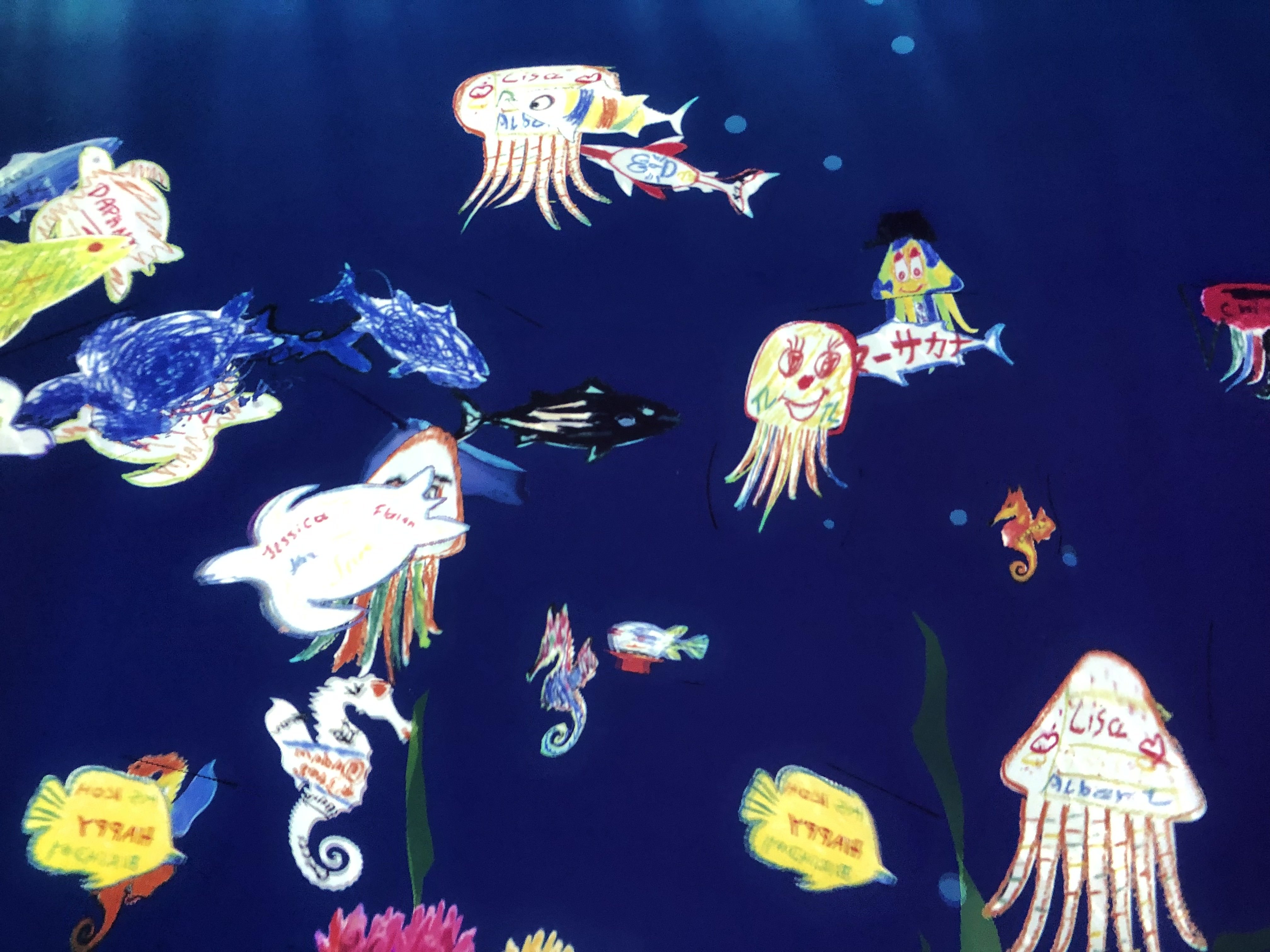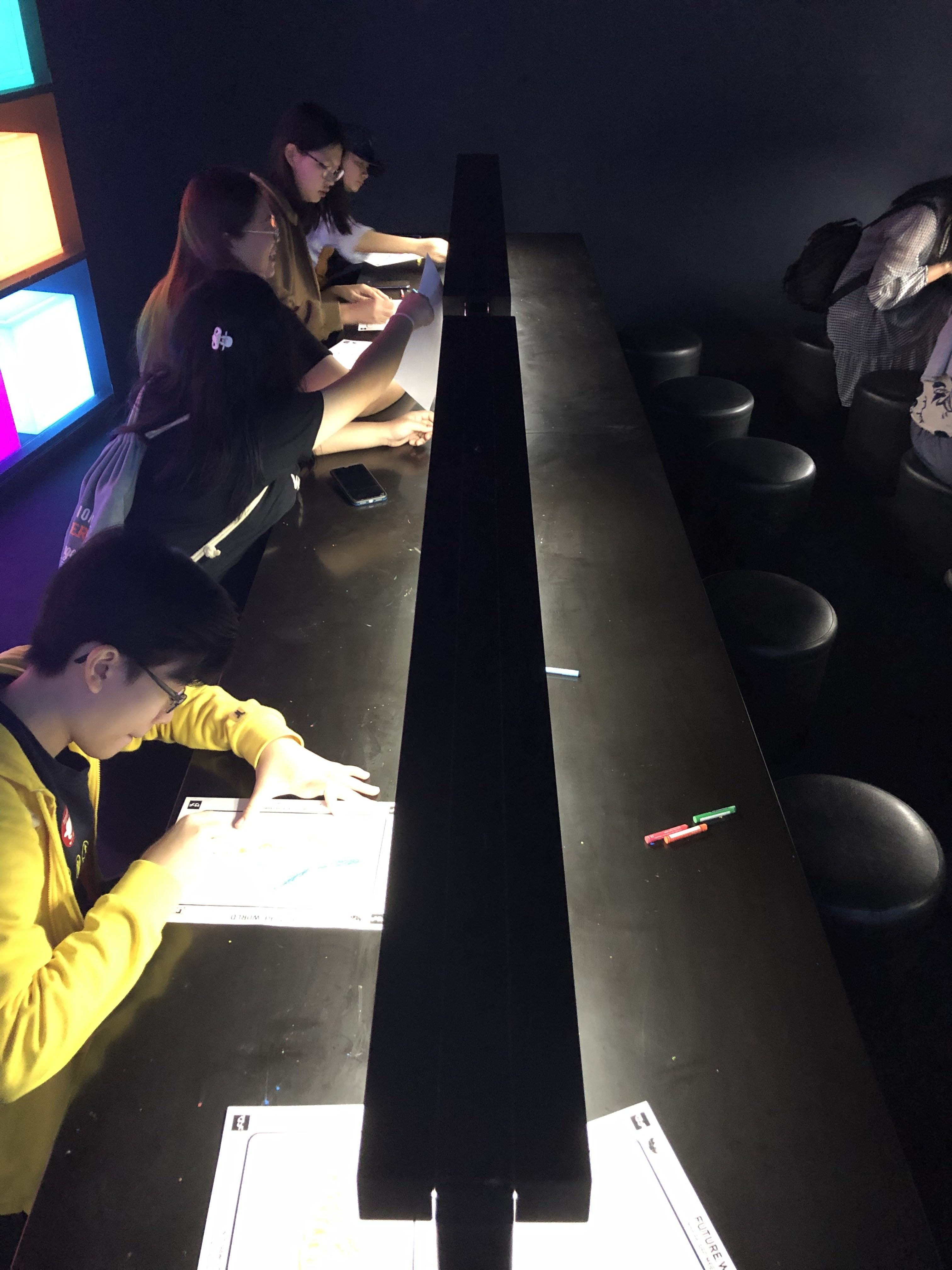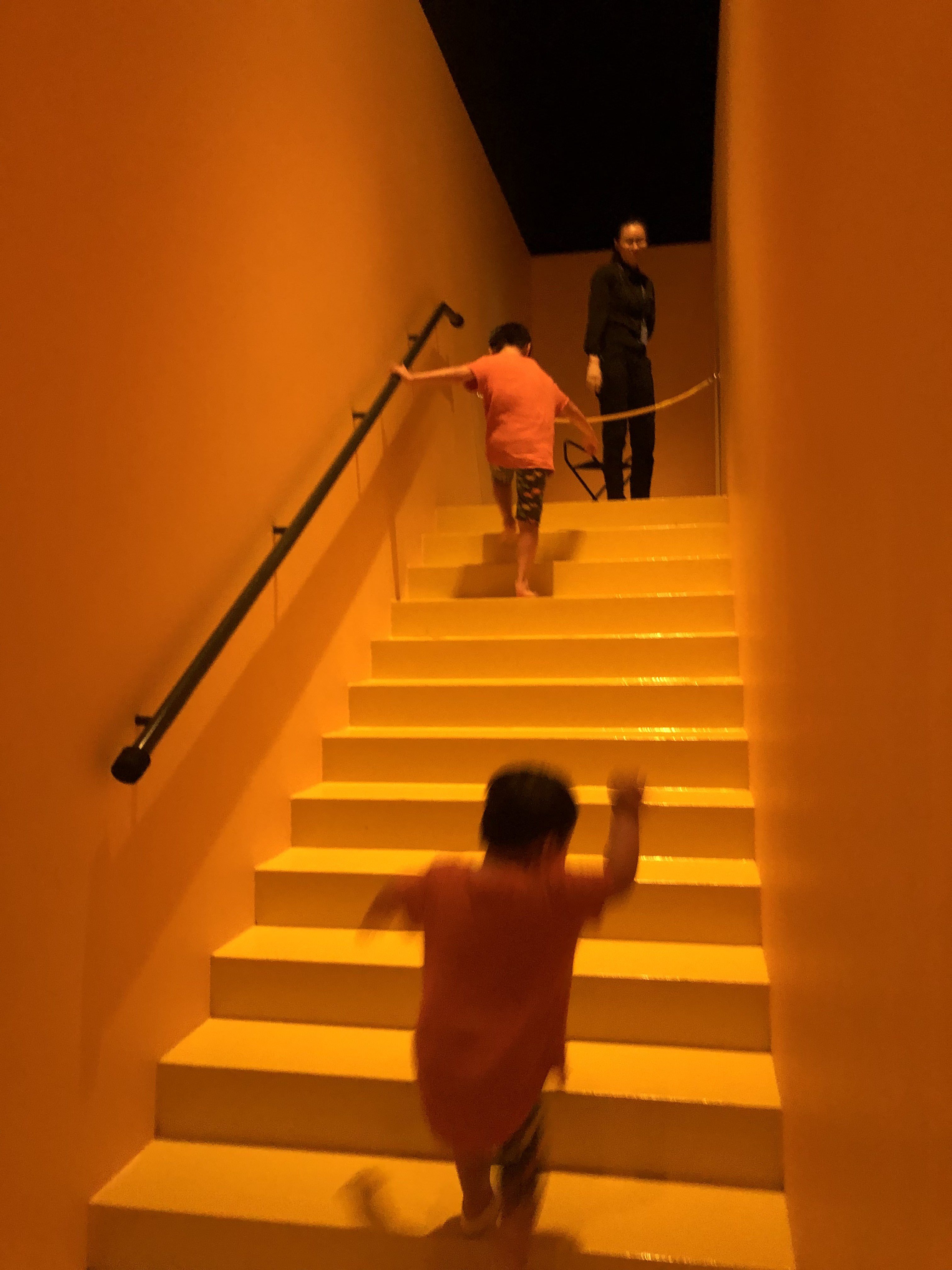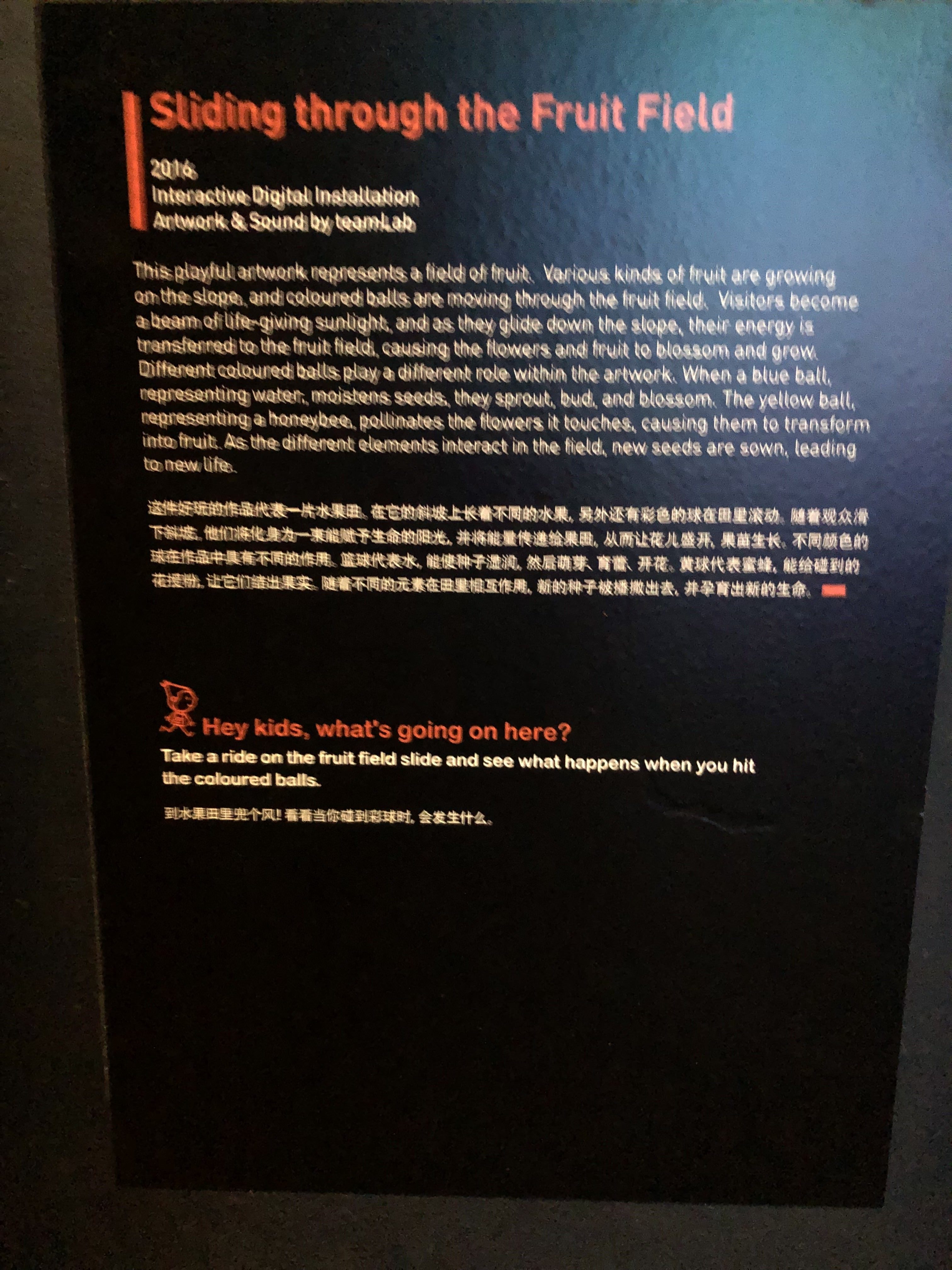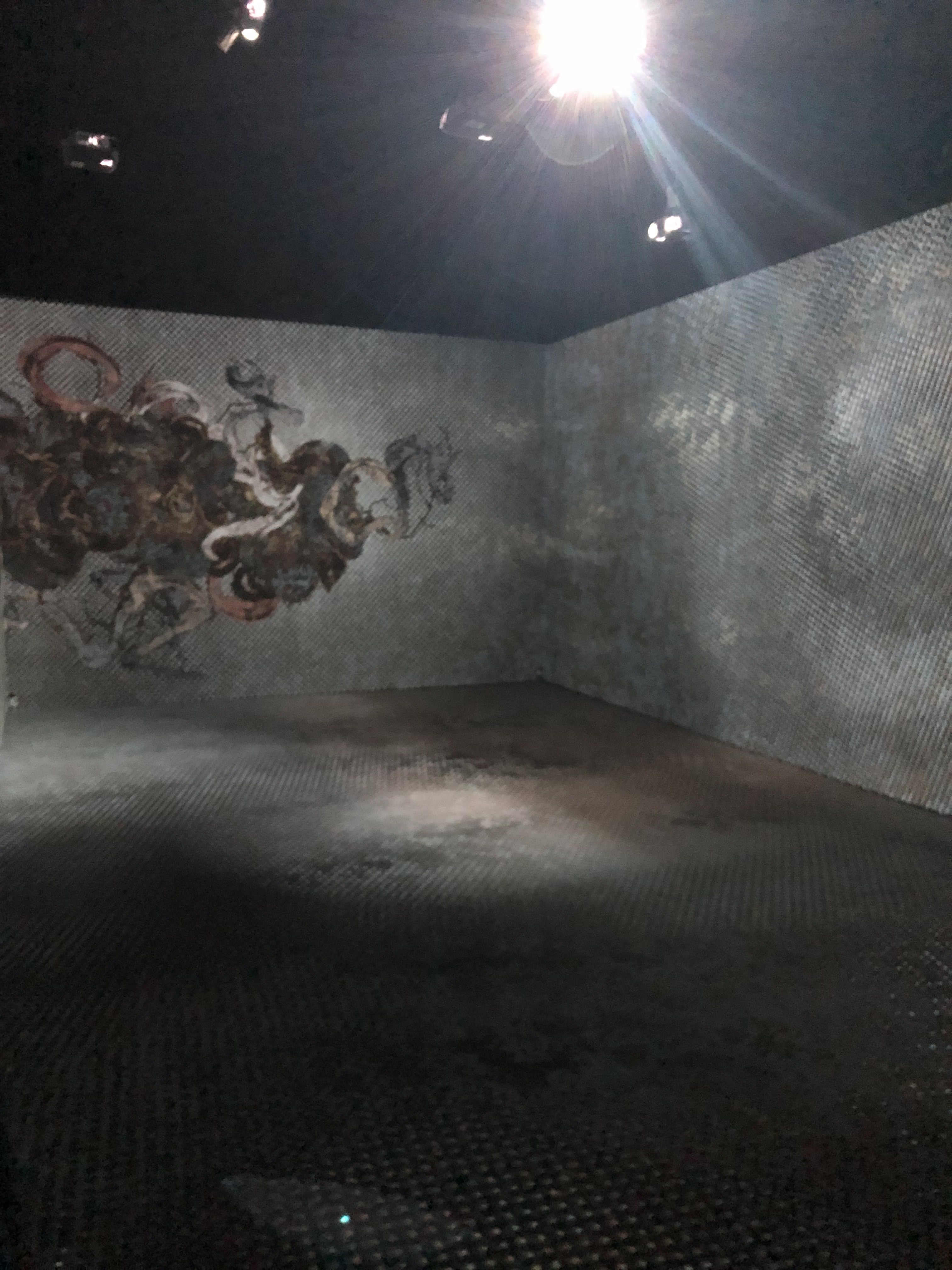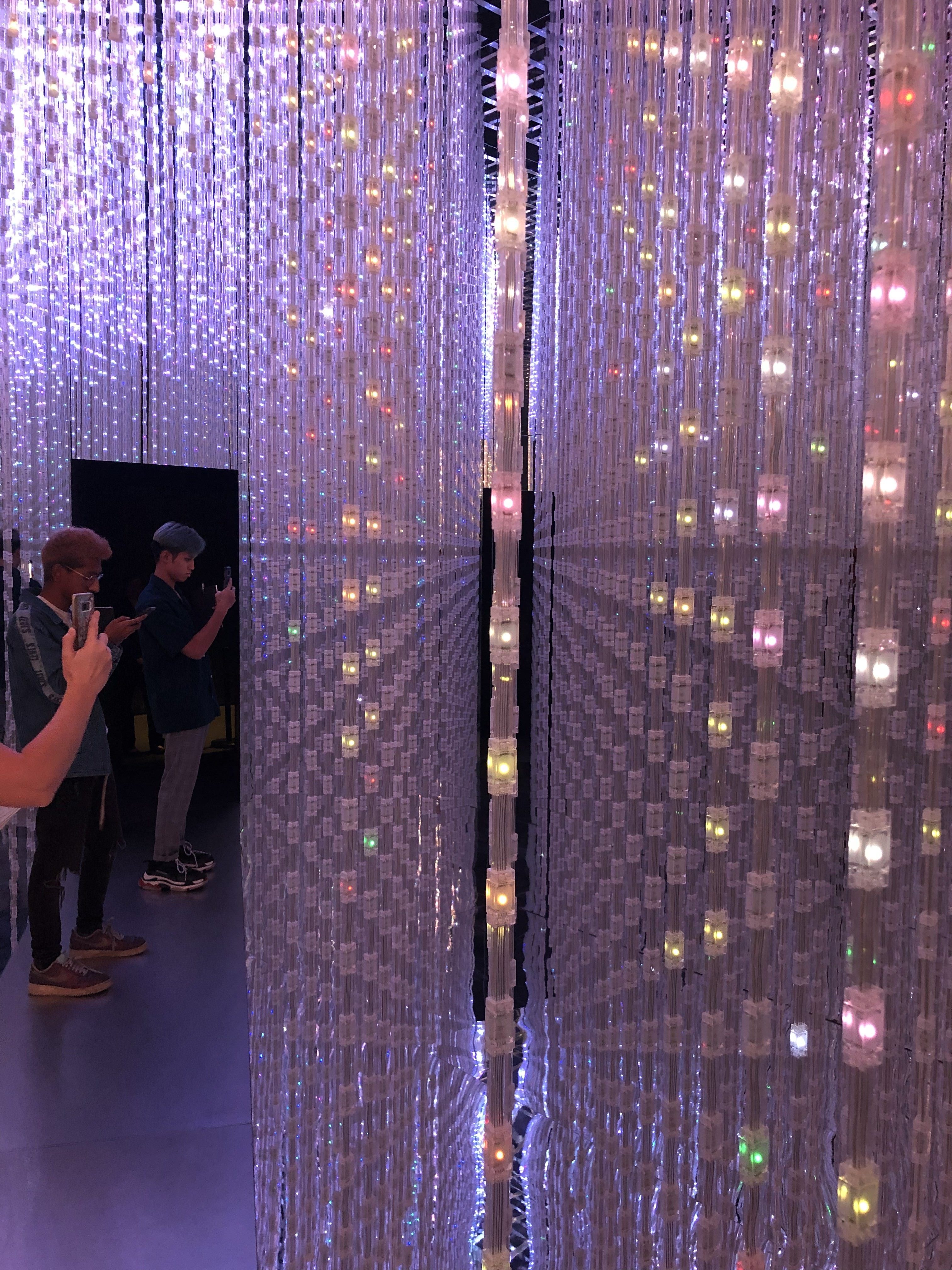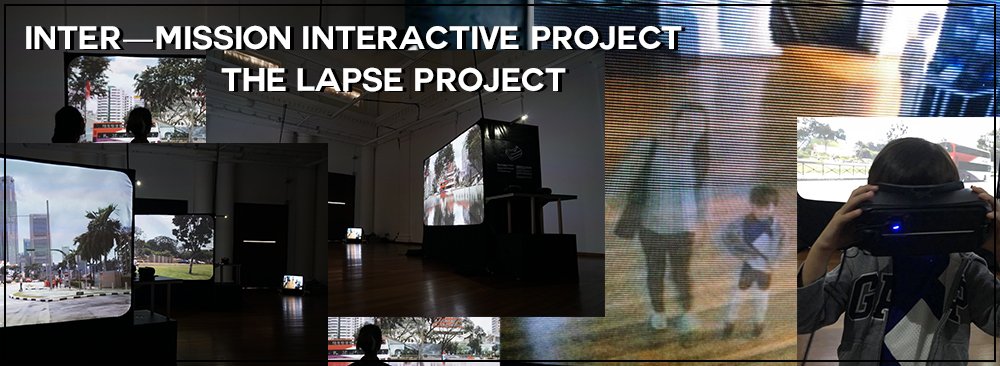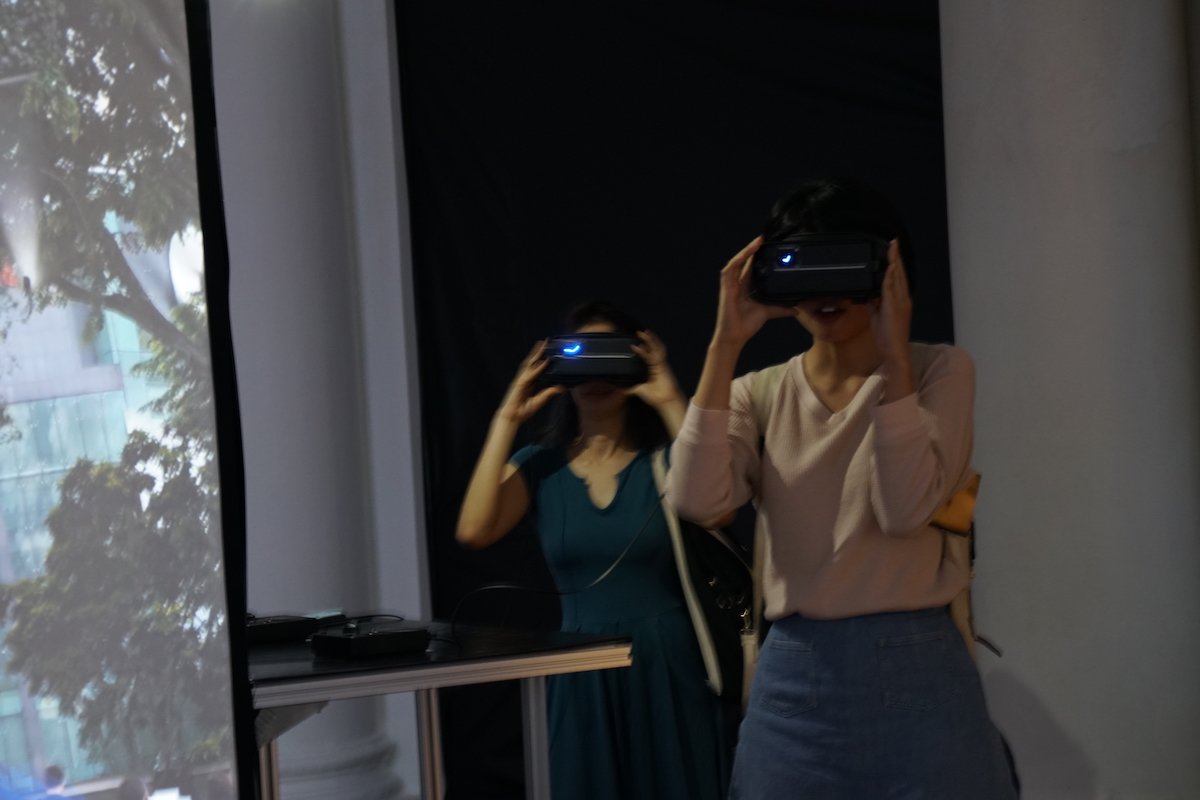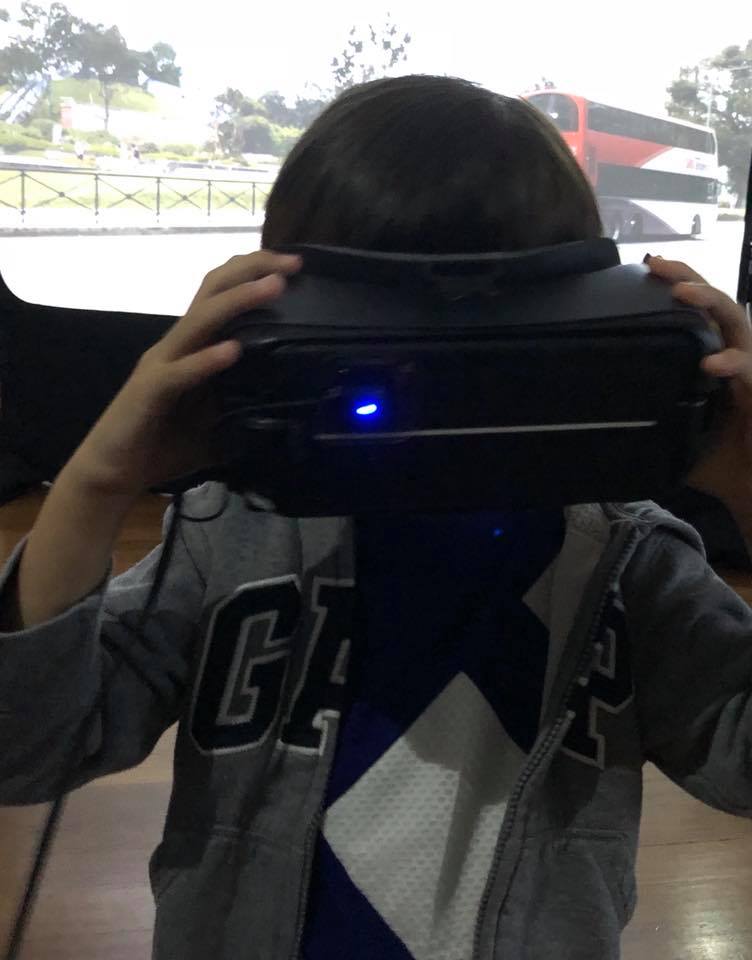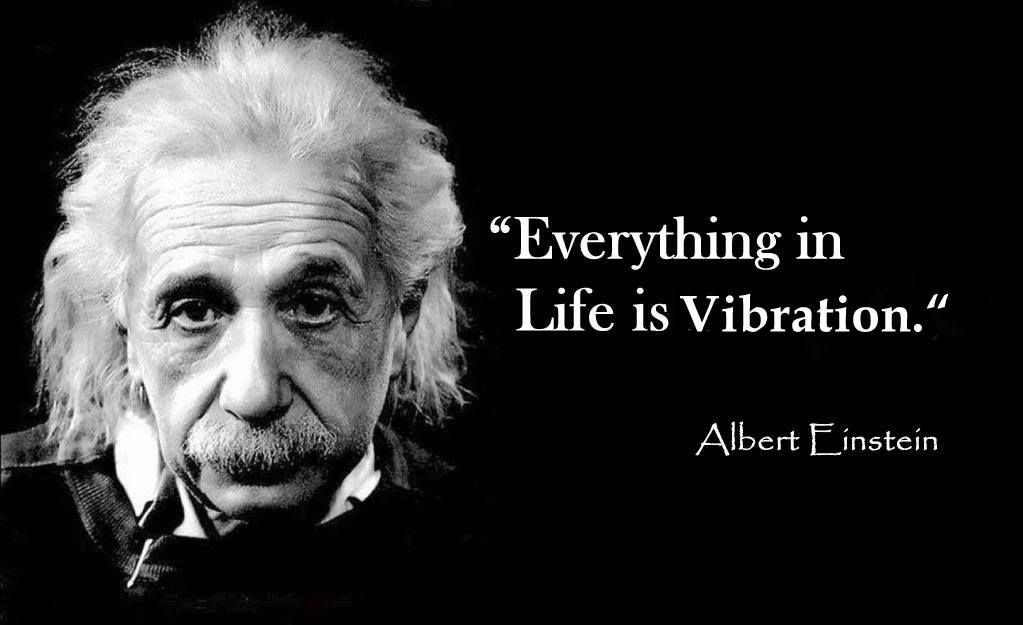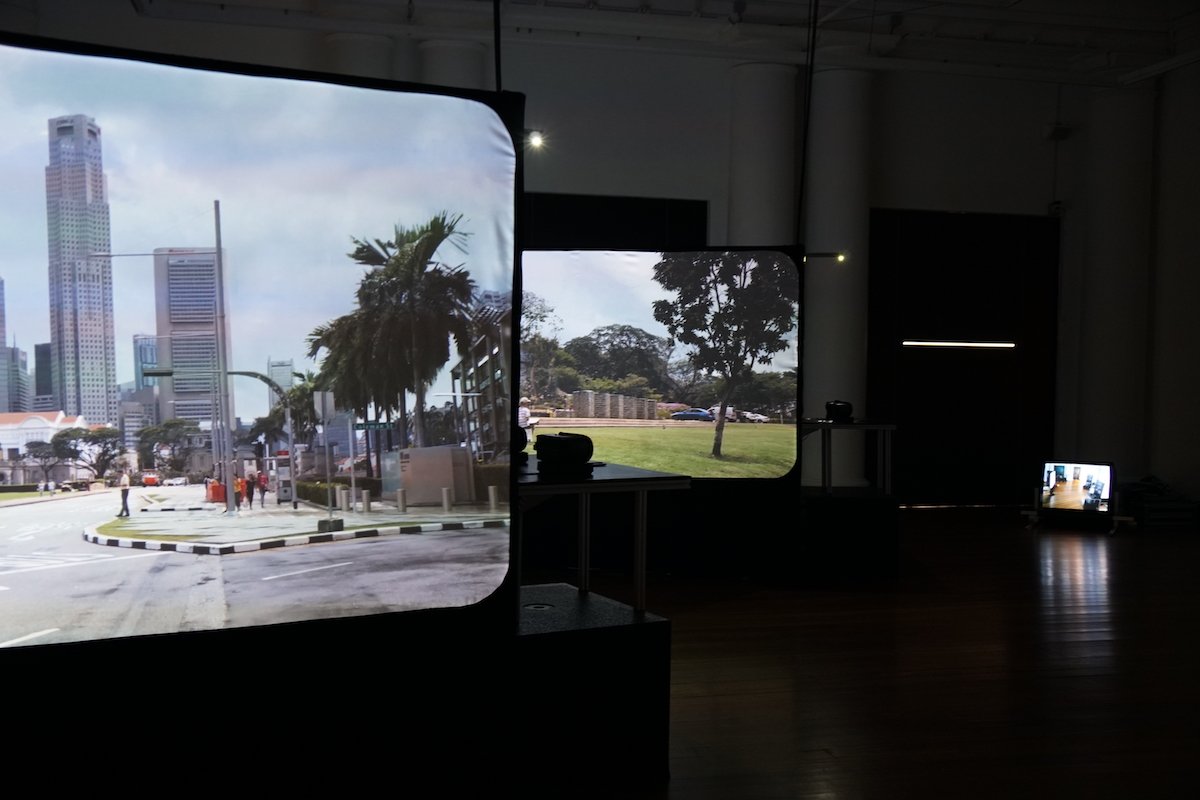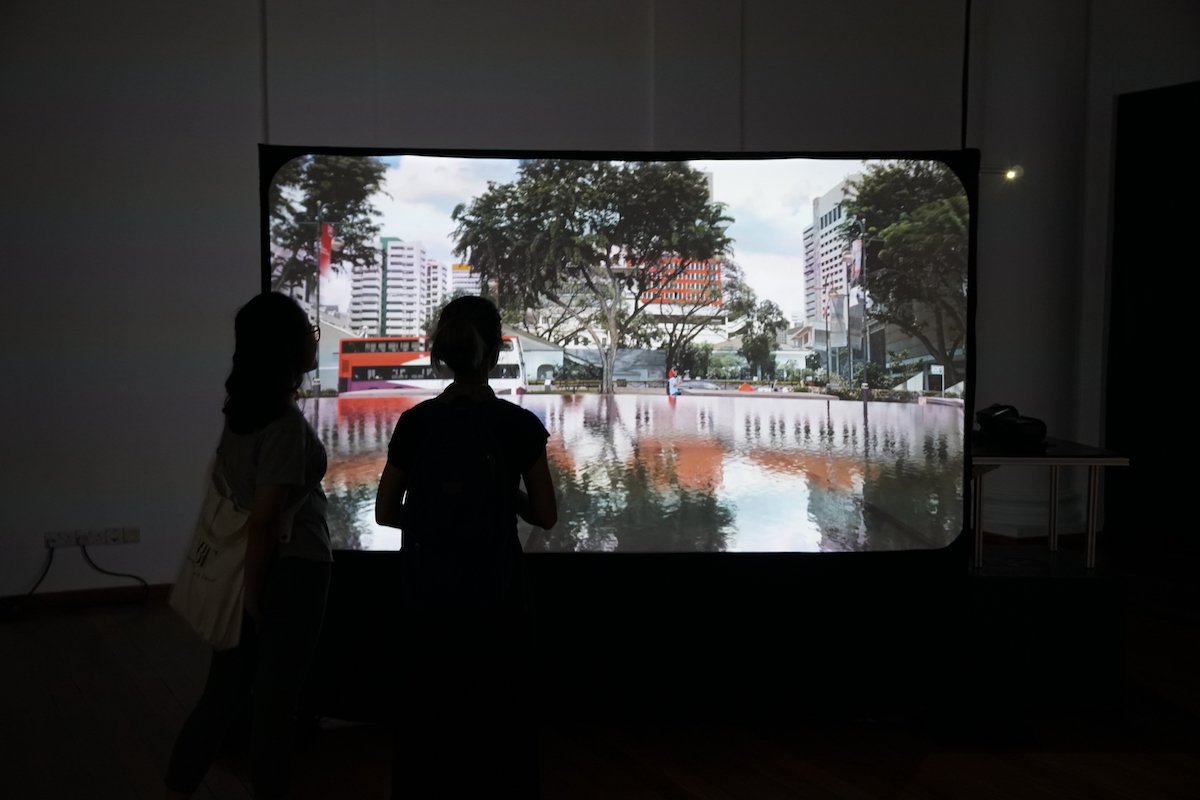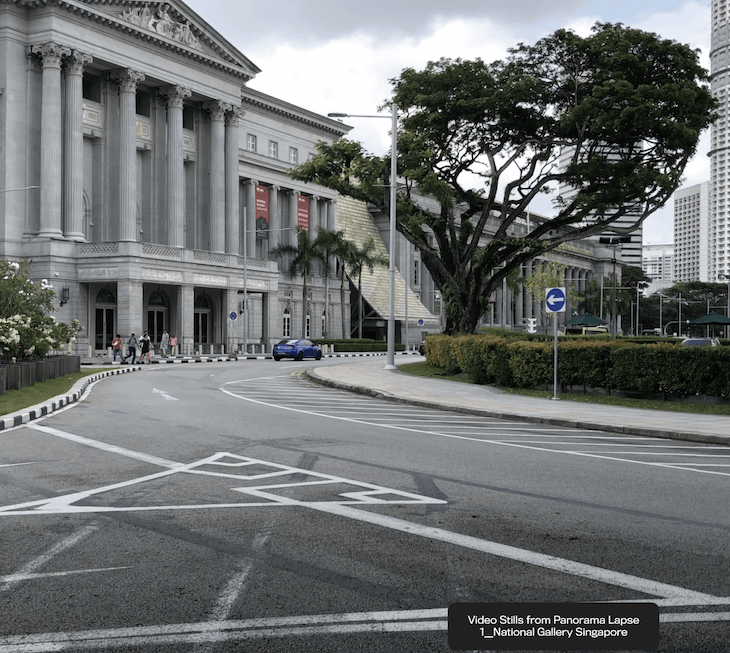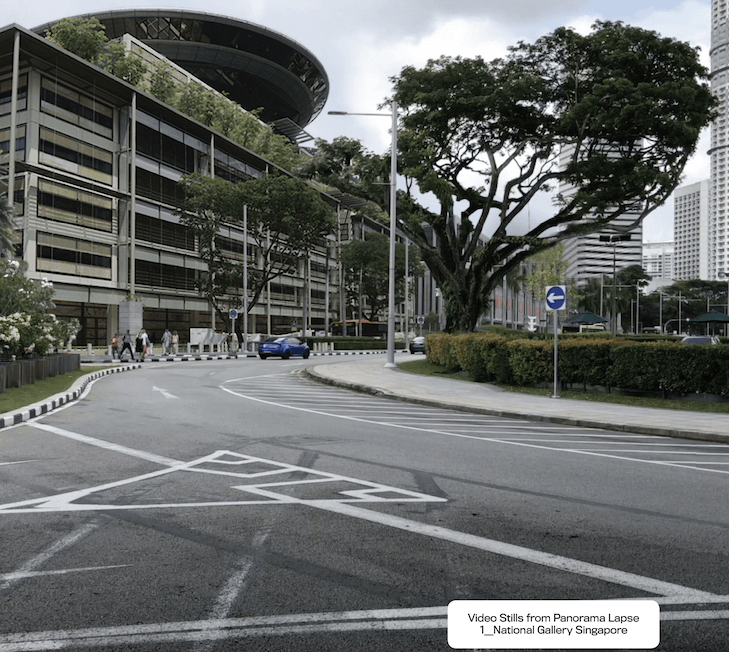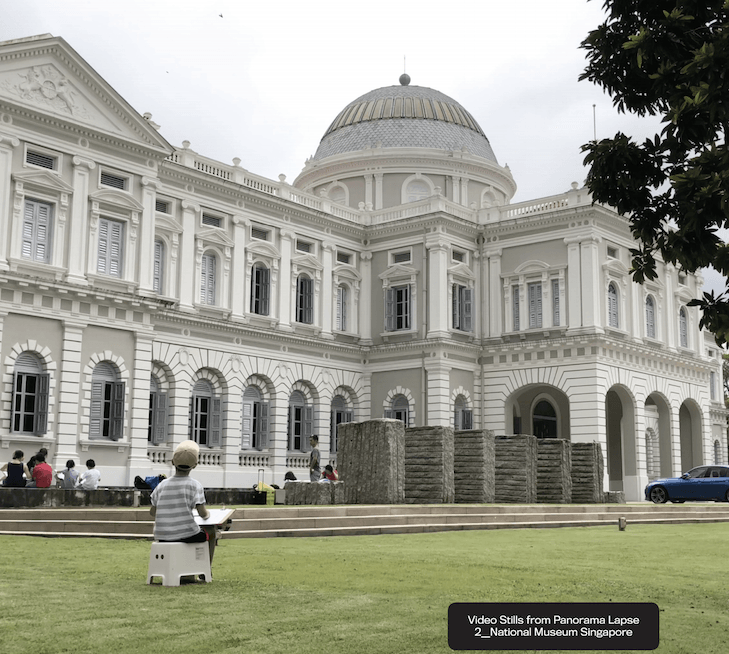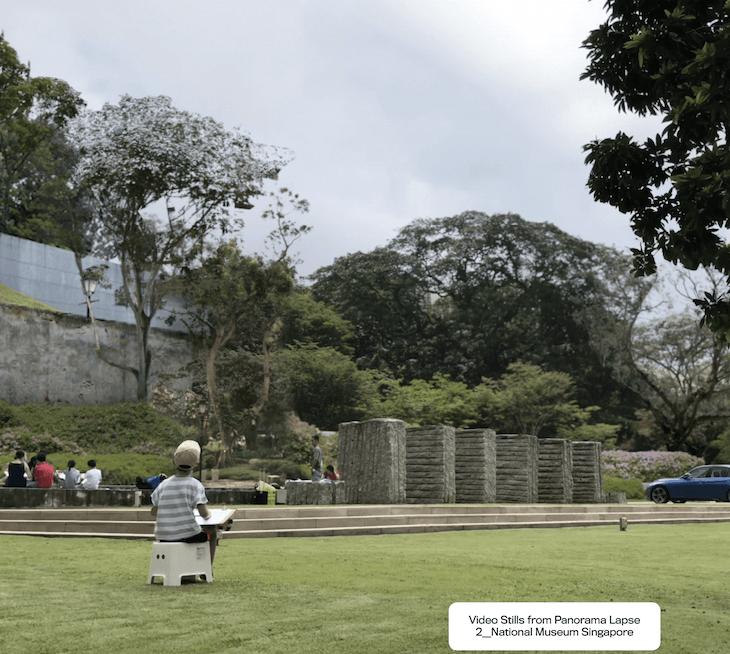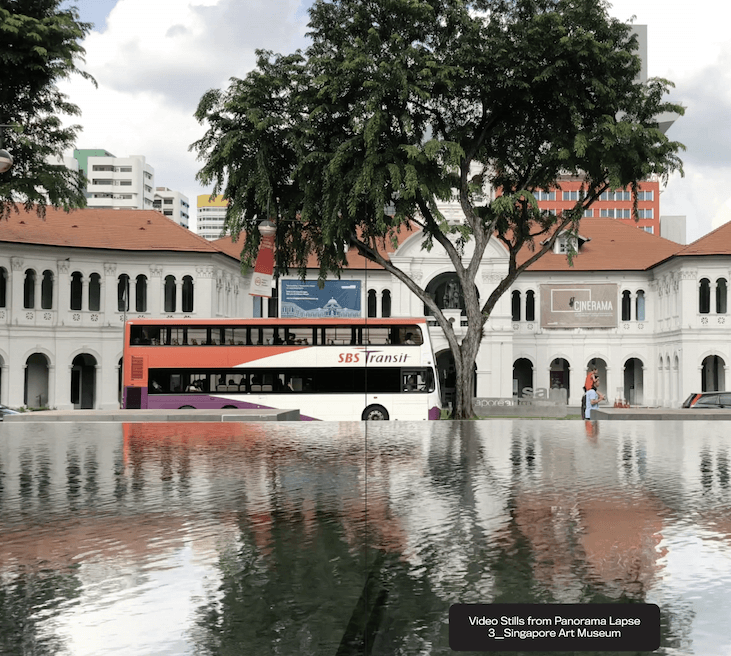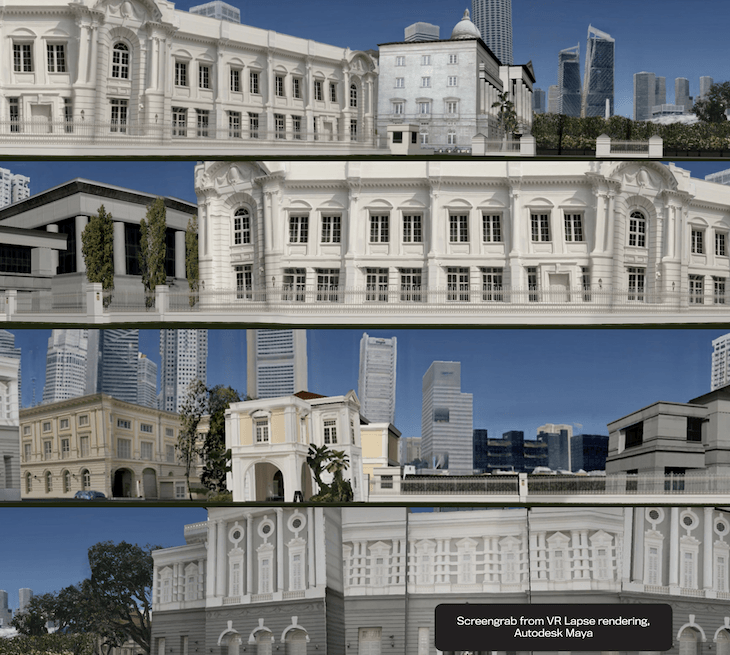Introduction
In ADM, we study the history of art during our first year. As we dive into our second year of school, we study the history of design which covers interactive media, product design, and visual communications. So, what is the difference between art history and history of design? And why are histories of design (in this case, interactive media), other than histories of art, of particular importance for new media art in this generation?
I’ve chosen the book, A Companion to Digital Art, written by John Wiley & Sons, Inc. in 2016, to write my research, impressions, and reflection. As an interactive media student myself, I wanted to read up and research on a topic of relevance to me, to aid me in my work or to give me inspirations for the projects that I am working on. As such, I specifically picked chapter 27: Exhibition Histories and Futures- The Importance of Participation and Audiences.
This chapter discusses new media art, which is prospering in this age of time, and how it requires audiences and participation for the whole work of art to happen. Also, it examines exhibition histories and shows how it links and influences the future, which are the exhibits we see in our current lives now.
What is New Media Art
We have transited from traditional artwork to what we call new media artwork in this current era. I define traditional art as art bring produced at the present period of time that reflects the current culture by utilizing classical techniques in drawing, painting, or sculpting. One example would be Starry Night by Vincent Van Gogh as shown below:
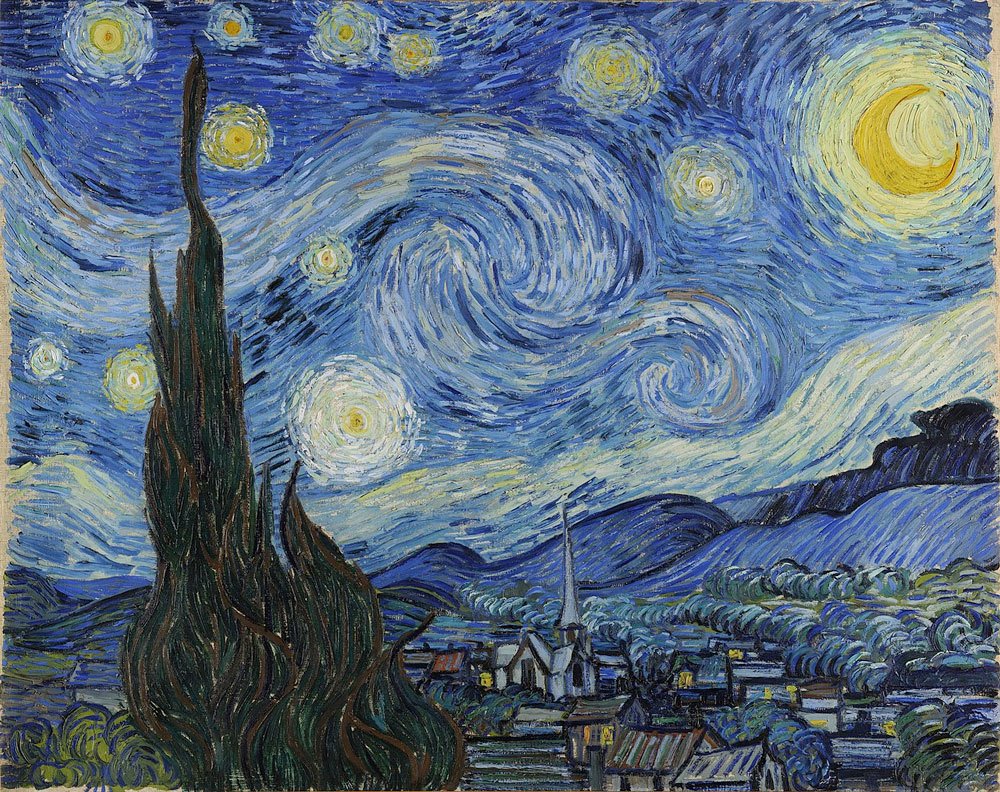
On the other hand, new media art includes digital art, computer graphics, computer animation, virtual art, Internet art, and interactive art. One very good example would be my class’s recent field trip to Singapore’s ArtScience Museum, where we visited the Future World Exhibit. You can view my reflections and insights here:
Y2S1 | Interactive Media 1 | ArtScience Museum Future World | Impressions and Reflections
Participation and Audiences in New Media Art
So what is so special about new media art? New media art does not fully exist as an artwork unless it is exhibited and interacted with by the audience. The fundamental interplay of space, time, and materiality is familiar to curators of installation art and media installations of various kinds and needs careful consideration of artists’ intent for the wider cultural context of the space.
Here is an example: The Tenth Sentiment by Ryota Kuwakubo’s artwork in 2011.
As you can see, this is an installation of a model train moving on its track through a landscape of mundane household objects in a darkened room. The shadows on the walls are entirely created by a small light on the front of the train, casting beautiful and fleeting animations across the walls.
Now imagine if all these that I mentioned above were just to be captured as an installation shot, or to be documented as a mere catalog of the objects and media being involved.
It would be so unfair to the artist as it would do so little justice to the whole experience of the exhibit. The behaviors of the audience would definitely be different if they were to be there in person to view the whole setup- the domestic hush in the intimate darkness, the small pleasurable sighs at an unexpected light effect, the repeated slow circuits around the room, and most importantly, their awareness that other people are also staying to wonder.
Why was the last point important though, some might wonder? This is because viewers’ interactivity is a key issue for exhibition histories. If audiences are missing from exhibition documentation, then all exhibitions would appear to be static objects, which conforms to the art‐historical norm.
Importance of Participation and Audiences in New Media Art
Although the specific medias being used in any installation is important, the conduct and performance of the work itself are equally, or rather more important for the audience, for them to rethink curatorial methods in terms of the particular systems and values of new media art.
As mentioned above, new media art includes digital art, computer graphics, computer animation, virtual art, Internet art, and interactive art. However, it doesn’t just end there. It is a notoriously problematic term to start with, which can cover a whole range of different media, systems, and means of distribution. So how do we identify if it is new media art?
“The three main characteristics of new media art are: connectivity, computability, and interactivity.” – Steve Dietz, 1999.
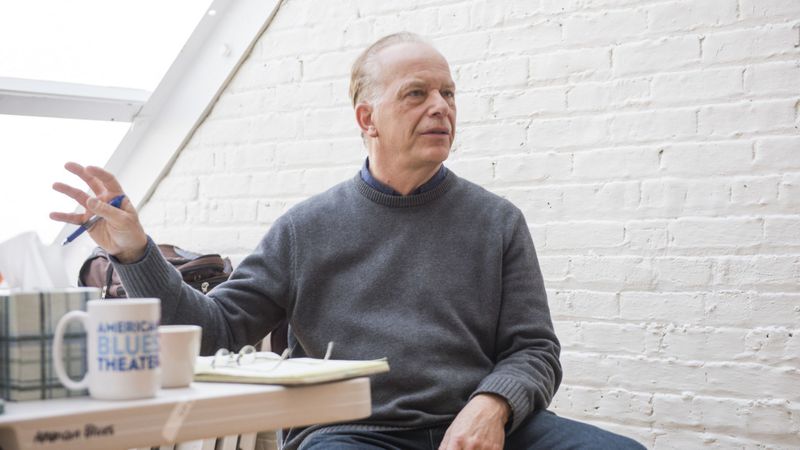
Who is Steve Dietz? Dietz is an American playwright and theatre director. Called “the most ubiquitous American playwright whose name you may never have heard”, Dietz has long been one of America’s most prolific and widely produced playwrights.
In his phrase, each characteristic, when applied to new media art in general, can be related to different exhibition histories, ranging from installation to performance, to videos.
Connectivity is a familiar feature to curators of live art or conceptual art, where the work of art itself bridges itself with the audience. The connection can be in any form as constructed by the artist, be it through sound, light, touch, or just viewing it alone. One example would be an event titled “Reunion” in Toronto back in 1968.
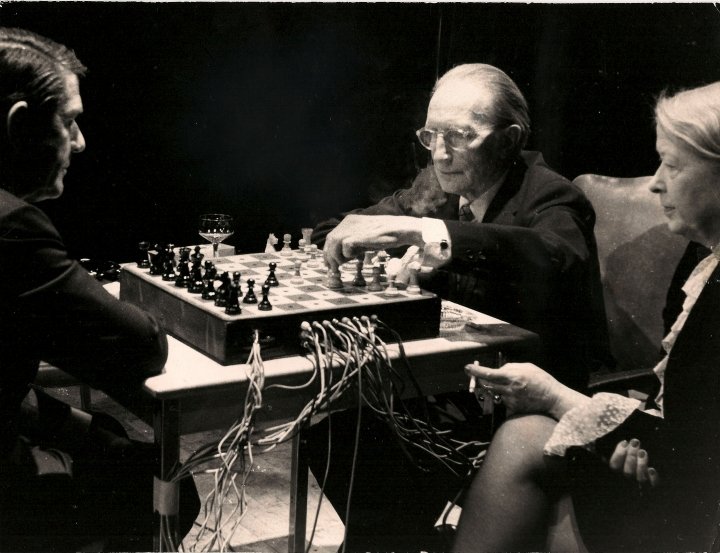
Marcel Duchamp and John Cage played a game of musical chess. The event drew an audience of hundreds to the Ryerson Theatre, where the two creative giants would activate a unique auditory experience through a specially constructed chess board that triggered different electronic compositions with each individual move, while Alexina Duchamp (the female in the picture) looks on with a handy bottle of wine to lubricate the social connections.
When it comes to computability, it is the technologies used in the setup itself. Things like Arduino, Touchdesigner, TinyDB, Unison, or even just coding by itself like Python- all these automation and technology are being used in the setup to make things move or react to something according to the response of the audience, making the installation mobile and fluid.
And lastly, for interactivity, it is basically the participation between the art and the audience. Like what I have mentioned above, interactivity is a key objective for new media art. If audiences are missing from exhibition documentation, then all exhibitions would appear to be static objects, which makes no difference to traditional art.
Without participation and audiences, these three characteristics would not be able to arise. And when these three characteristics are not in place, new media art would not be able to develop. This shows how important participation and audiences is important and essential in new media art.
New Media Art through New Media Systems
New media art can be expressed in many ways as mentioned, but what is the driving force behind it? This is where new media systems come into play.
New media systems are used for many things- selling things, collecting things, categorizing things, curating things, and of course, creating art. An important characteristic of new media system is that it contains many archives of documentations of art or exhibitions. One example is The Archive of Digital Art:
https://www.digitalartarchive.at/database/database-info/archive.html
Take a look at this website which features a lot of commissioned new media art, where the art can be experienced as an exhibition virtually. It is categorised so neatly into different genres, and they give full information on each and every artwork, just like what you would expect to see in an exhibit.
But of course, the downside of this would be that the audience would not be able to feel the whole experience as they would only be seeing it through their own computer screens in static images. However, this is not the case for all virtual exhibitions.
New media systems have advanced to fast such that things such as virtual museum tours are steadily becoming more and more common. VR has the power to transport users to places they might never be able to visit in real life so welcoming digital visitors into the museums of the world is a natural fit. Let us take a look at this example for the National Museum of Natural History.
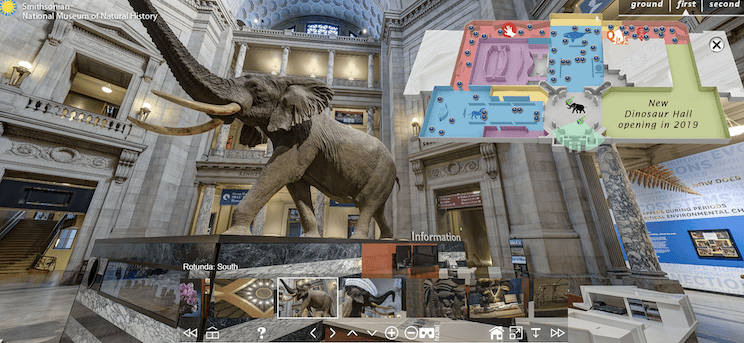
This famous museum in Washington has several virtual tours integrated directly onto the web. Using Web VR means that virtual visitors can utilize any headset, providing a Web VR enabled browser that is used. The tours include both permanent and past exhibitions with the core tour offering dozens of panoramic images that can be navigated via an on-screen map or interactive arrows.
While the tour lacks in supporting content, it certainly makes up for in scope and range, with dinosaurs, sea life, geology and more in focus. Here’s the link for you to have a short experience:
https://naturalhistory2.si.edu/vt3/NMNH/z_NMNH-001.html
As such, it could be argued that Youtube, Vimeo, blogs, Flickr, or just the Internet itself are the largest, most connected and most participatory documentation archives of art. Even things like Open Source, this current OSS system that we are using, is also an example of how new media system archives art, producing new media art. And if you haven’t realised, all these examples that I have shown complies with the three characteristics of new media art- connectivity, computability, and interactivity.
How Participation and Audiences create History
Every art movement was being influenced by the previous art movement, just like how Romanticism first developed as a reaction to the dominant movement of its time- Neoclassicism.
So how does new media art create history in the world of design, to influence the next generation, or rather the next movement? And the answer is, again, participation and audiences.
One apt example would be an exhibit named “Information” curated by Kynaston McShine back in 1970, in the Museum of Modern Art (MoMA) in New York. The exhibit was influenced by conceptual art, but with new curatorial tools and methods through the integration of ideas of interaction and participation. And before we continue, here is yet another example of how every art movement influences the next art movement- conceptual art was the fundamental and leading influence on interactive and participatory work of all media in this era.
Looking into one of the works inside Information would be Hans Haacke’s work “MoMA Poll”. MoMA Poll was a work of art that actively uses participation by the audience, who voted on political questions, with their votes being visible to all, in clear plastic posting boxes. These types of interaction and installation traditionally were the responsibilities of different departments within a museum, but were now brought together via artistic practice thorugh MoMA Poll.

McShine planned the exhibition installation in collaboration with MoMA’s production manager. The installation included several beanbags as audience seating, eschewing hard modernist benches and opening up the possibility for audience members to choose where to put them, to interact with each other, or engage in solitary contemplation of artworks. Audience comfort is of course not always the first thing on artists’ minds. It may be the work’s intent to discomfort or provoke. A little sidetrack, here is a post that I did on uncomfortable interactions through interactive art. Do screen through to appreciate how uncomfortable interactions are able to create a good experience for the audience!
Y1S2 | Experimental Interaction | Research Critique 4 | Uncomfortable Interactions
Now back to MoMA Poll- This installation is an early example of what in the art world came to be known as institutional critique. Such work of arts creates history as it is controversial and it stands against the social norm, and all these would not have been possible without participation and audiences. And in time to come, these works will definitely influence the next generation of artworks.
Conclusion
In conclusion, we can all see that participation and audiences are really crucial in interactive artwork, which is considered as new media art in this generation. Traditional artwork was all static artwork, there is no flow or movement in the artwork itself. However, new media art needs motion and activity for it to work.
This can also be linked to Do-It-With-Others (DIWO), a joint project development model that enables like-minded people to collaboratively work on a task, project or any other service. To me it, it is like a concept that is to create something together with others, and it is similar to how new media art works as well. Without participation and audience, the whole work of art would not be able to execute at all.
Here is a project which I applied the concept of DIWO:
Y1S2 | Experimental Interaction | Micro-Project 2 | Crowd-Sourced Art
All in all, I’ve learned that the core foundation for the success of a good and valuable new media interactive art would be participation and audience. This knowledge would definitely be instilled in my mind for works that I’ll be doing in the future, bringing me to greater heights!


